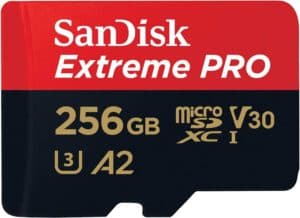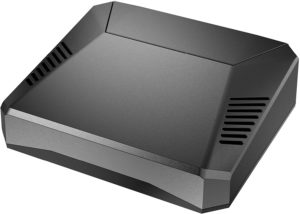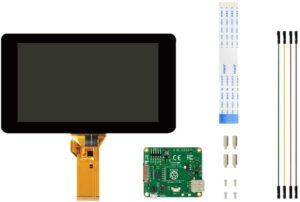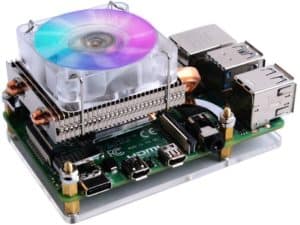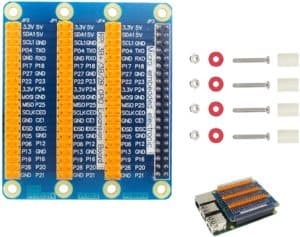Best Raspberry Pi Accessories in 2023
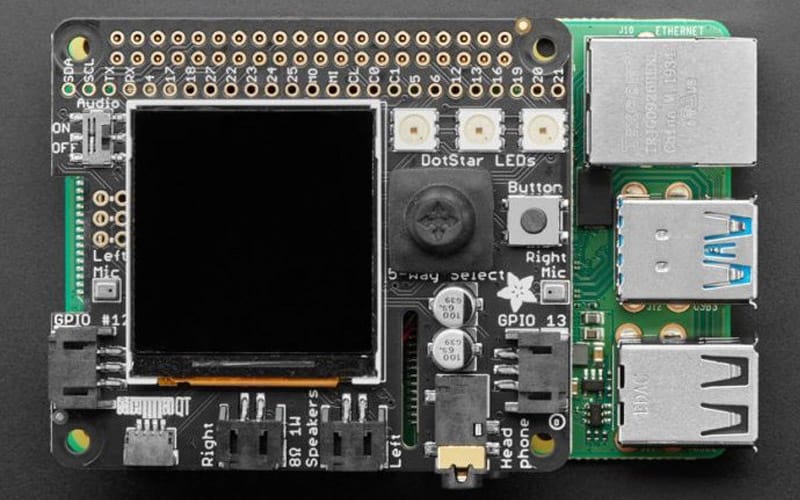
Table of Contents
Although the Raspberry Pi is an impressive marvel of miniaturized computing and an affordable playground for creativity for both newcomers and seasoned tinkerers, it’s nothing without a few choice accessories. Indeed without at least an SD Card, power supply, and a screen, you’ll struggle to get the Pi working, let alone tap into its full potential.
To that end, we’ve searched far and wide for the very best Raspberry Pi accessories out there, and trust us when we say that there’s no shortage of options from basic requirements such as SD Cards to more elaborate ways to level the Pi such as GPIO extension boards by way of protective cases designed to keep the Pi safe from the elements and dust.
For novices, navigating this abundance of accessories can turn what is supposed to be a fun process into a tedious trudge. Our aim? Simplify the process by highlighting some guaranteed winners. So, if you’ve picked up a Raspberry Pi and are looking for some guidance on where to look for the next piece of the puzzle, you’ve come to the right place.
Products at a Glance
How we picked
To avoid penning a thesis-length article and put you off the Raspberry Pi for good, we’ve limited our picks to the most popular Raspberry Pi accessories: case, SD Card, fan, screen, and GPIO extension board. Most of these are considered essential before you can conceivably fire up the overwhelming majority of Raspberry Pi projects.
While simply pointing you to the most expensive option in each category would generally guarantee a quality accessory, the reality is that most of our purchases are dictated by our wallets. As such, we’ve gathered together cost-effective accessories that, while not necessarily the best out there, are assured to pair beautifully with the Raspberry Pi without leaving you destitute.
For convenience, we’ve broken down our guide into easy-to-digest sections focused on a particular accessory where we’ll provide a brief introduction and spotlight why they are worth your attention. As always, hop to the end to find our ‘Things to Consider’ section for some helpful tips on what to look for when shopping for Raspberry Pi accessories.
Without further ado, here are some of the best Raspberry Pi accessories on the market.
Product Reviews
- 170 MB/s read and 90 MB/s write
- 64 GB/128 GB/ 256 GB/ 400 GB
- A2, V30, U3 class rating
- Temperature, water, shock, X-Ray-proof
- None
An SD Card provides a home for the operating system required to bring the Pi to life, whether that’s Windows, Raspberry Pi OS, Ubuntu, OSMC, or any of the other dozen Raspberry Pi-compatible operating systems. Without an SD Card, the Raspberry Pi simply won’t work, making it the single most important accessory.
Our pick goes to the SanDisk Extreme Pro Micro SD Card because you get ample storage room, the quality guarantee from one of if not the leading SD manufacturers in the world, and a reasonable asking price.
Available in several capacities, from 64 GB to a massive 400 GB by way of 128 GB and 256 GB, the SanDisk Extreme Pro Micro SD Card soars past the basic 8 GB required to get the Pi up and running to offer more room than most projects will ever need.
Alongside, it features all the best SD Card class ratings out there: A2, V30, and U3. These class ratings ostensibly mean blisteringly fast read and write speeds (170 MB/s read and 90 MB/s write), fast loading, and superb in-app performance. Thankfully, this fancy marketing lines up to a T with real-world performance, and the SanDisk Extreme Pro Micro SD Card ensures a snappy and responsive Raspberry Pi experience.
The features don’t stop here, though. The SanDisk Extreme Pro Micro SD Card is a robust storage option with in-built temperature, water, shock, and X-Ray-proof; it can handle virtually anything you can throw its way, beneficial for outdoor Pi projects.
- Sleek, clean, and compact design
- Two HDMI ports
- M.2 SATA SSD slot
- Integrated passive and active cooling solution
- Easy-access magnetic GPIO cover
- On the pricey side
- Only compatible with Raspberry Pi 4
While not essential, finding a home for your Raspberry Pi is a wise choice if only to offer a layer of protection from accidental drops and the unavoidable accumulation of dust, but also for cooling reasons and as a means of adding an aesthetic finish to a project. The Argon ONE M.2 Case pairs a sleek, clean, and compact design with passive and active cooling and a spread of storage options rarely afforded to Pi cases.
Aside from these choice features, the Argon ONE M.2 features an SSD adapter board that can accommodate an M.2 SATA SSD to increase the storage capacity of a Raspberry Pi project. The board links to the Raspberry Pi via a nifty mini bridge converter, a smart solution that coheres nicely with the overall looks of the case.
Additionally, the Argon ONE M.2 routes the HDMI (morphing them into full HDMI), USB, and audio port on the PI to more convenient locations on the back of the case, enhancing the case’s clean, ordered look as well as vastly improving cable management. A magnetic cover grants easy access to the GPIO to connect a HAT add-on.
The Argon ONE M.2 includes passive and active cooling by using the case itself as a heat sink with protrusions sitting above the CPU and RAM on the Pi and a fan also mounted on the case. Performance is excellent, and temperatures are unrecognizable compared to those experienced with a standalone Pi.
Although most of the accessories in our guide made the cut for cost-effectiveness, we deviated somewhat with Argon ONE M.2 Case. It falls on the higher end of the pricing scale when it comes to Raspberry Pi cases. In our opinion, the compact design, great looks, excellent storage options, and robust passive and active cooling warrant every penny of the $45 asking price. It’s possible to find a more budget-friendly option, but expect some serious compromises compared to the Argon ONE M.2.
- Official Raspberry Pi part
- 7-inch screen with 800 x 480 resolution
- 10-finger capacitive touch
- Adapter board
- No stand or casing
Unless you plan to pair your Raspberry Pi with a standard PC monitor, you’ll need a screen of some description. To that end, the Raspberry Pi 7″ Touch Screen is a top choice, not least because it’s made and sold by Raspberry Pi, so you get all the reassurance and guaranteed compatibility of buying directly from the masterminds behind the mini-computer itself.
As for the specifics of what you get for laying down a reasonable $65, the screen features a 7-inch full-color display that can push a maximum resolution of 800 x 480. It’s also a touch screen, for that familiar phone or tablet functionality, with 10-finger touch commands and gestures.
The Raspberry Pi 7″ Touch Screen delivers a vibrant viewing experience defined by superb color accuracy, ample brightness, and sharp images, something more budget-oriented Raspberry Pi screens fail to offer. While the resolution may seem low in this day and age of 4K monitors and TVs, the small form factor means any larger isn’t necessary and would fall firmly in the domain of overkill.
Assembly and installation are another strong point worth a mention. Thanks to an included adapter board, the screen takes care of everything from power and signal conversion to touch inputs, all via a simple two GPIO pin connection to the Raspberry Pi. Additionally, the screen includes pre-fixed mounts to install the Raspberry Pi easily.
The only real criticism we can muster up is that the Raspberry Pi 7″ Touch Screen doesn’t ship with a stand or case, so expect to fashion one yourself or purchase one from a third party.
- PC tower-style heatsink and fan combo
- LED fan
- Powered through Raspberry Pi
- Compatible with RPi 3 and RPi 4
- Superb cooling performance
- Large profile
Anyone who’s dabbled with the Raspberry Pi is well aware that the mini-computer can quickly reach substantial temperatures, especially the Pi 4, even under reasonably modest usage, let alone overclocking or prolonged loads. Therefore, a fan and heatsinks fit for purpose are vital. Not only does a solid cooling solution help you avoid thermal throttling, but it also extends the lifespan of the Raspberry Pi. The GeeekPi Raspberry Pi RGB Fan delivers some of the best Pi cooling performance, dropping temperatures by almost half compared to running the Pi as is.
Borrowing the PC-style tower fan and heatsink combo so often found in full-fat PCs, the GeeekPi Raspberry Pi RGB Fan marries a single-stack finned heat sink with 5 mm copper tubing running through the CPU block and a 40 mm fan. The fan features an LED that cycles through several colors to add a bit of PC-style RGB flair to any Raspberry Pi project. The combo is designed to sit directly above the Pi’s CPU – the part most in need of a helping hand to dissipate heat.
Despite its unconventional design by Raspberry Pi standards, the GeeekPi Raspberry Pi RGB Fan is easy to install thanks to an included mounting bracket, standoffs, nuts, screws, thermal tape, and other accessories. Additionally, the GeeekPi Raspberry Pi RGB can source sufficient power directly from the Raspberry Pi, canceling out the need for an additional power supply or power source. With good compatibility baked in, the unit is designed to sit happily on the Raspberry Pi 3 Model B, the Raspberry Pi 3 Model B+, and the latest Raspberry Pi 4 Model B.
The GeeekPi Raspberry Pi RGB Fan’s large profile, which measures roughly 40 mm from CPU block to the top of the fan, excludes the use of standard-sized cases, so bear this in mind when planning for a project.
- Compatible with all full-sized Raspberry Pi models
- Expands single GPIO row on the Pi to three rows
- Allows for multiple HATs
- Clear pin labelling
- Limits fan placement and efficiency
The Raspberry Pi’s GPIO pins are the gateway to a dizzying array of add-ons (called HATs, or ‘hardware attached on top’ in Raspberry Pi jargon), from breadboards to LEDs through to motors, buttons, and sensors. The GPIO is the centerpiece of any Raspberry Pi project that pushes beyond the basic functionality of the board itself. But, even a basic project can occupy the entire GPIO with a single HAT, requiring the need for an extension board that effectively multiplies the number of pins. As such, an extension board such as the Pastall Raspberry Pi GPIO Extension Board is a crucial addition to any experimentally-minded maker’s arsenal of Raspberry Pi accessories.
Plugged into the Raspberry Pi’s GPIO, the Pastall Raspberry Pi GPIO Extension Board extends the number of accessible pins by three, allowing for up to three full-sized HATs. Each of the pin rows is clearly labeled, an excellent convenience touch that can significantly simplify attaching individual pins for complex projects.
The Pastall Raspberry Pi GPIO Extension Board is designed to pair equally well with all full-sized Raspberry Pi models from the original Raspberry Pi 1 all the way to the most recent Raspberry Pi 4, making it a versatile option whichever generation of the Pi you are working with for your project.
The Pastall Raspberry Pi GPIO Extension Board mounts via the four standoff slots on the Pi itself and sits no higher than the USB and Ethernet ports on the back of the board. This setup can limit fan placement somewhat, the only real complaint we can throw at the Pastall Raspberry Pi GPIO Extension Board, although there is more than enough space to have heatsinks on the Pi’s core parts.
How to pick the best Raspberry Pi accessories
There are a loads of things to consider when picking the best Raspberry Pi accessories, namely, which ones to go for in the first place! Here’s a few pointers to steer you in the right direction.
SD Card
As we noted above, a Raspberry Pi is no more than a slab of electronic waste without a few core essentials to get it up and running. Among them, an SD Card is by far the most important as it provides the operating system required for the Pi to work. Fortunately, SD Cards are affordable and should be your first buy alongside the Raspberry Pi itself.
Screen
Second to the SD Card is a screen. Without one, there’s no way to interface with the Pi. While it’s possible to connect the Pi to a standard PC monitor, TV, or even a laptop, nothing beats a dedicated display, notably if portability is a core part of a project. Additionally, a touch screen takes the need to source a keyboard and mouse out of the equation.
Power Supply
Finally, the Raspberry Pi needs power, but the mini-computer doesn’t come bundled with a power supply. Check the requirements of your specific model. The Raspberry Pi 4, for instance, requires a 15W USB Type-C power supply such as the official Raspberry Pi USB-C Power Supply.
What accessories should you buy with Raspberry Pi?
We think going for a quality screen, case, fans, and extension board is a great way to go.
What are the best things you can do with your Raspberry Pi?
Our Verdict
The SanDisk Extreme Pro Micro SD Card delivers ultra-fast speeds and plenty of capacity options that far exceed the Raspberry Pi’s basic requirements. A sound and crucial addition to any Raspberry Pi project.
Sleek and clean, the Argon ONE M.2 Case is not just a compact home for the Raspberry Pi but also a novel way to expand its storage capacity via the included M.2 SATA SSD board and keep the Pi running cool with a superb passive and active cooling solution.
Sold with RPi’s official stamp of approval, the Raspberry Pi 7″ Touch Screen is a must-have for any maker that needs the functionality of a quality, compact 10-finger command touch screen. With pre-fixed mounting on the back, it’s also a great permanent home for the Raspberry Pi.
A robust cooling solution that borrows the traditional design of CPU coolers, the GeeekPi Raspberry Pi RGB Fan will dramatically reduce temperatures even under the heaviest loads and even when overclocking. The LED fan is also a nice touch for projects needing a bit of RGB flair.
With no less than three full-sized GPIO pin rows, the Pastall Raspberry Pi GPIO Extension Board substantially expands the functionality of the Raspberry Pi and opens it up to a vast range of HATs.
With that, we’ll wrap up our guide to the best Raspberry Pi accessories. We hope it proves useful as you navigate the impressive range of options out there. Naturally, we’ve had to limit our picks for the sake of this article, so if there are any must-have accessories we might have missed, don’t hesitate to drop your suggestions in the comments section below. The same goes for any questions or concerns.


